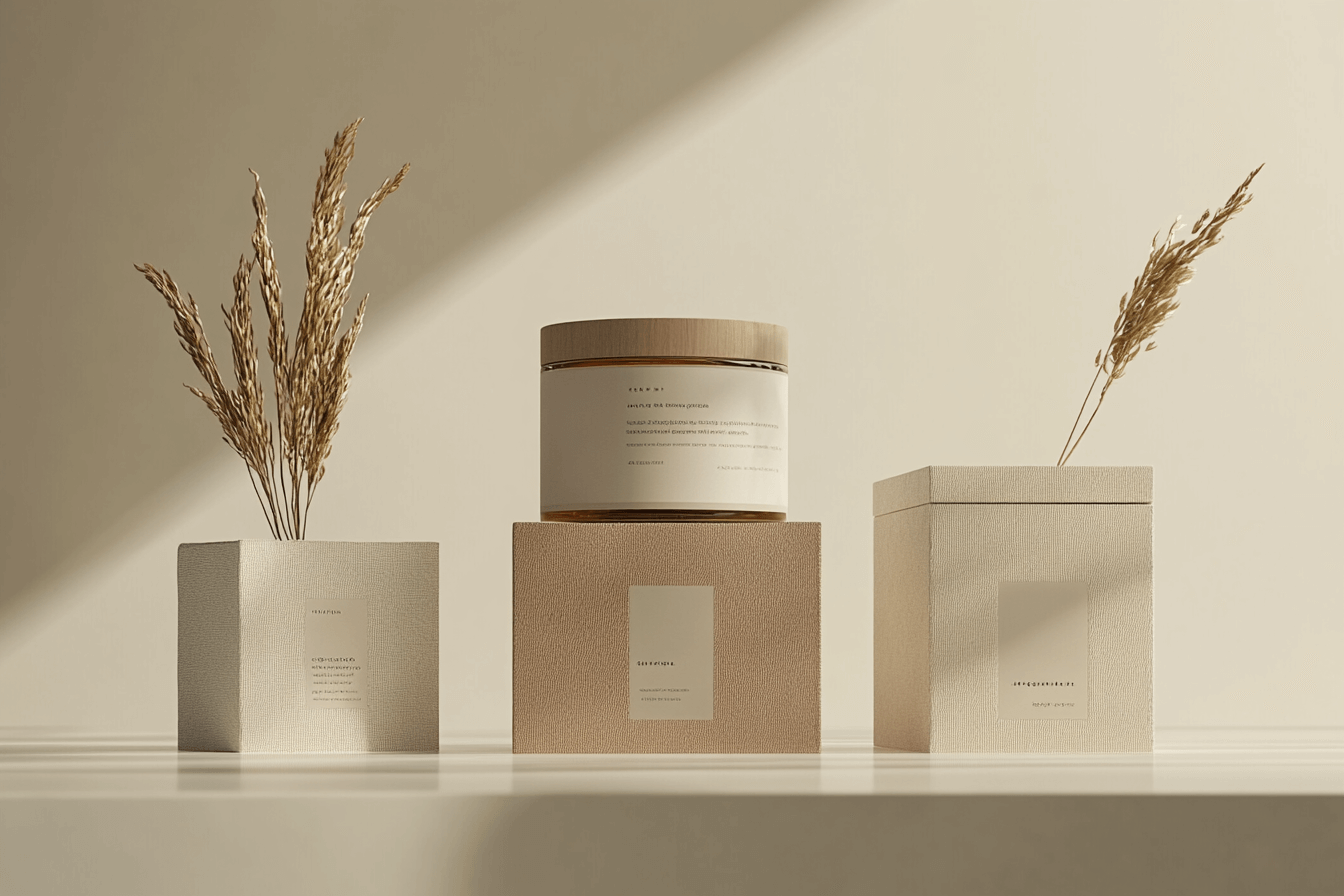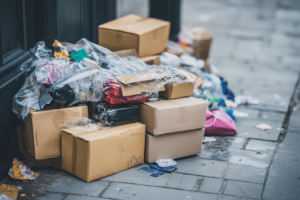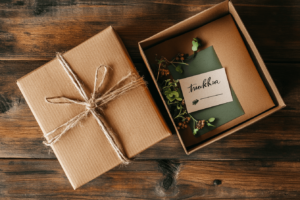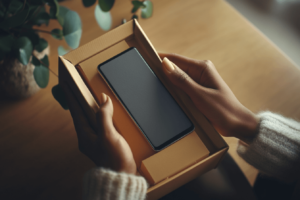The evolution of packaging trends
Packaging has evolved significantly over the years, moving beyond mere functionality to become an essential element of branding and consumer experience. Companies now use packaging to communicate their brand values, create emotional connections, and influence purchasing decisions.
The shift in packaging trends has been driven by multiple factors, including changing consumer preferences, environmental concerns, and technological advancements. As a result, three major trends have emerged in recent years: minimalism, luxury, and eco-friendliness. Each of these approaches offers unique advantages and challenges for businesses striving to create an impact in their respective markets.
From functionality to branding: a shift in packaging priorities
In the past, packaging was primarily designed to protect products during transportation and storage. However, as competition increased, businesses began using packaging as a powerful marketing tool. Today, packaging plays a crucial role in branding, customer engagement, and even sustainability efforts.
Modern consumers expect packaging to do more than just hold a product. They want it to tell a story, reflect brand identity, and offer convenience. This shift has encouraged brands to experiment with different materials, designs, and strategies to align their packaging with current consumer expectations.
Consumer expectations and market influences
Consumer behavior has a significant impact on packaging trends. Shoppers are increasingly looking for packaging that is aesthetically pleasing, environmentally friendly, and easy to use. Social media has also influenced packaging design, as brands strive to create visually appealing unboxing experiences that resonate with online audiences.
Additionally, regulatory requirements and environmental concerns are shaping the future of packaging. Governments worldwide are implementing stricter regulations on plastic usage, prompting brands to adopt more sustainable alternatives. As a result, packaging is no longer just a marketing tool but also a reflection of a brand’s commitment to sustainability and ethical business practices.
Minimalist packaging: simplicity with impact
Minimalist packaging is gaining popularity as brands strive for simplicity and sophistication. By eliminating unnecessary elements and focusing on clean, sleek designs, companies can create a modern and premium feel for their products.
Minimalism in packaging is about more than just aesthetics. It also enhances functionality, reduces production costs, and contributes to sustainability efforts. This approach appeals to consumers who appreciate straightforward, elegant, and environmentally conscious design choices.
The rise of minimalist design in branding
Minimalist packaging is often characterized by neutral colors, simple typography, and uncluttered layouts. This design philosophy conveys sophistication and trust, making it a popular choice among luxury and tech brands.
Apple is a prime example of a brand that has successfully implemented minimalist packaging. Their clean white boxes with minimal text and branding reinforce their premium image while ensuring a seamless unboxing experience.
Benefits: cost-effectiveness and sustainability
One of the biggest advantages of minimalist packaging is its cost-effectiveness. By using fewer materials and simpler designs, brands can save on production and shipping costs. This reduction in material usage also contributes to environmental sustainability, as it minimizes waste and resource consumption.
Consumers are also more likely to associate minimalist packaging with sustainability. Many eco-conscious shoppers prefer products with simple, recyclable packaging over those with excessive plastic or unnecessary embellishments.
Challenges: standing out in a competitive market
While minimalist packaging offers many benefits, it also presents challenges. With so many brands adopting clean and simple designs, it can be difficult to differentiate products on crowded shelves. Companies must find creative ways to make their minimalist packaging unique without compromising its simplicity.
Additionally, some consumers may perceive minimalist packaging as plain or lacking personality. Brands must strike a balance between simplicity and engaging design to ensure their packaging remains visually appealing.

Luxury packaging: elevating the unboxing experience
Luxury packaging is designed to create a sense of exclusivity and indulgence. High-end brands invest heavily in packaging to enhance the customer experience and reinforce their premium image. This approach often includes high-quality materials, intricate detailing, and innovative design elements.
Luxury packaging is not just about aesthetics; it also plays a psychological role in consumer perception. When customers receive a product in premium packaging, they associate it with superior quality and craftsmanship.
The role of high-end materials and finishes
Luxury packaging often incorporates premium materials such as textured paper, embossed logos, metallic accents, and magnetic closures. These elements contribute to a tactile and visually appealing experience that enhances the perceived value of the product.
For example, high-end perfume brands use glass bottles, velvet linings, and gold foil detailing to create an aura of sophistication and exclusivity. These packaging elements make the product feel more luxurious and justify a higher price point.
Emotional connection and brand perception
Luxury packaging is designed to evoke emotions and create memorable experiences. A beautifully packaged product can make consumers feel special and appreciated, strengthening their connection to the brand.
The unboxing experience has become a crucial part of luxury branding. Many premium brands invest in elegant packaging to ensure customers have a memorable moment when opening their purchase. This attention to detail fosters brand loyalty and encourages word-of-mouth marketing.
Sustainability challenges in luxury packaging
While luxury packaging is effective in creating a premium feel, it often comes with sustainability challenges. Many high-end materials, such as plastic laminations and metallic foils, are not easily recyclable. This creates a conflict between luxury branding and environmental responsibility.
To address this issue, some luxury brands are adopting eco-friendly alternatives. For example, sustainable luxury packaging solutions include biodegradable materials, reusable boxes, and water-based printing techniques. These innovations allow brands to maintain a premium image while reducing their environmental impact.
Eco-friendly packaging: the sustainable revolution
Eco-friendly packaging is becoming a priority for businesses worldwide as consumers demand more sustainable solutions. This trend focuses on using materials that are biodegradable, recyclable, or reusable to minimize environmental impact.
Many brands are now shifting toward eco-conscious packaging to align with regulatory requirements and consumer expectations. This shift is not just an ethical choice but also a strategic one, as sustainability is a key factor influencing purchasing decisions.
Biodegradable and recyclable materials
One of the main strategies in eco-friendly packaging is the use of biodegradable and recyclable materials. Companies are replacing traditional plastic with plant-based alternatives, such as cornstarch packaging and compostable paper wraps.
Brands are also prioritizing recyclable packaging, ensuring that materials can be easily processed and reused. This reduces waste and lowers the carbon footprint of packaging production.
Consumer demand for green solutions
Modern consumers are more environmentally conscious than ever before. They prefer brands that demonstrate a commitment to sustainability through their packaging choices. Companies that fail to adopt eco-friendly packaging risk losing market share to competitors who prioritize sustainability.
Businesses are also responding to this demand by adopting transparent labeling and eco-certifications to assure consumers that their packaging meets environmental standards.
Balancing sustainability and aesthetic appeal
While sustainability is a priority, brands must also consider aesthetics and functionality. Some consumers perceive eco-friendly packaging as less attractive or less durable than traditional packaging. Companies must find ways to integrate sustainability without compromising design quality.
Innovations such as molded pulp packaging and minimalist eco-friendly printing techniques help brands achieve a balance between sustainability and visual appeal.
Finding the right balance: what works best for brands?
Brands must carefully evaluate their target audience, product type, and brand values when choosing a packaging strategy. While some businesses benefit from minimalist packaging, others may require luxury elements or eco-friendly materials to align with their brand identity.
By staying informed about consumer trends and adopting innovative packaging solutions, brands can create packaging that not only meets market demands but also enhances their overall brand image. The future of packaging lies in finding the right balance between aesthetics, functionality, and sustainability.








